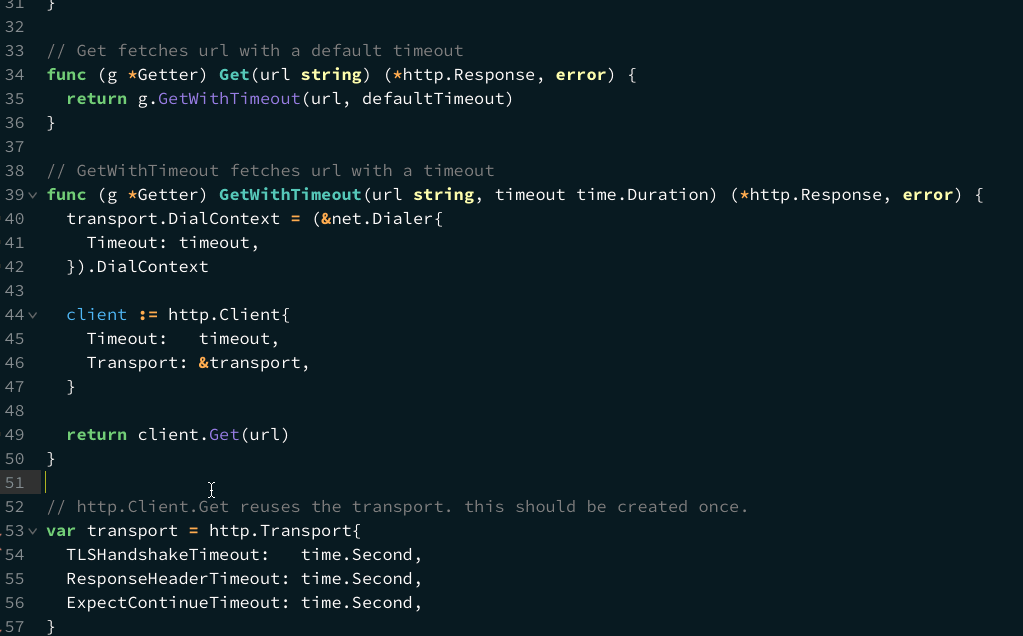After I've found leaks in my program, I've solved the problem. However, now I'm trying to find out how to " test " leaking connections in a Go test? This is my question.
I've tried to change the number of requests in my test, didn't matter. No matter what I do, the current number of TCP connections in my test stay the same.
func TestLeakingConnections(t *testing.T) {
getter := myhttp.New()
s := newServer(ok)
defer s.Close()
cur := tcps(t)
for i := 0; i < 1000; i++ {
r, _ := getter.GetWithTimeout(s.URL, time.Millisecond*10)
r.Body.Close()
}
for tries := 10; tries >= 0; tries-- {
growth := tcps(t) - cur
if growth > 5 {
t.Error("leaked")
return
}
}
}
// find tcp connections
func tcps(t *testing.T) (conns int) {
lsof, err := exec.Command("lsof", "-n", "-p", strconv.Itoa(os.Getpid())).Output()
if err != nil {
t.Skip("skipping test; error finding or running lsof")
}
for _, ls := range strings.Split(string(lsof), "
") {
if strings.Contains(ls, "TCP") {
conns++
}
}
return
}
func newServer(f http.HandlerFunc) *httptest.Server {
return httptest.NewServer(http.HandlerFunc(f))
}
func ok(w http.ResponseWriter, r *http.Request) {
w.Header().Add("Content-Type", "application/xml")
io.WriteString(w, "<xml></xml>")
}
// myhttp package
// ...other code omitted for clarification
func (g *Getter) GetWithTimeout(
url string,
timeout time.Duration,
) (
*http.Response, error,
) {
// this is the leaking part
// moving this out of here will stop leaks
transport := http.Transport{
DialContext: (&net.Dialer{
Timeout: timeout,
}).DialContext,
TLSHandshakeTimeout: timeout,
ResponseHeaderTimeout: timeout,
ExpectContinueTimeout: timeout,
}
client := http.Client{
Timeout: timeout,
Transport: &transport,
}
return client.Get(url)
}
// fixture worker package
// some outside code injects getter into fixture_worker like this:
getter := myhttp.New()
// NewWithTimeout creates a new fetcher with timeout threshold
func NewWithTimeout(
getter myhttp.HTTPGetter,
fetchURL string,
timeout time.Duration,
) *Fetcher {
return &Fetcher{getter, fetchURL, timeout}
}
// Fetch fetches fixture xml
func (f *Fetcher) Fetch() (*parser.FixtureXML, error) {
res, err := f.getter.GetWithTimeout(f.fetchURL, f.timeout)
if err != nil {
if res != nil && res.Body != nil {
res.Body.Close()
}
return nil, errors.Wrap(err, ErrFetch.Error())
}
defer res.Body.Close()
ioutil.ReadAll(res.Body)
return &parser.FixtureXML{}, nil
}
Output of fixture worker lsof: https://pastebin.com/fDUkpYsE
Output of test: https://pastebin.com/uGpK0czn
Test never leaks whereas fixture worker it leaks.
Fixture worker is using the same code as the test, to request http gets using myhttp package.

